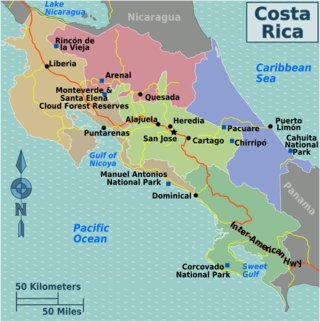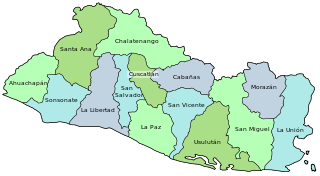Related Research Articles
The Protocol to Prevent, Suppress and Punish Trafficking in Persons, Especially Women and Children is a protocol to the United Nations Convention Against Transnational Organized Crime. It is one of the three Palermo protocols, the others being the Protocol Against the Smuggling of Migrants by Land, Sea and Air and the Protocol Against the Illicit Manufacturing of and Trafficking in Firearms.

Trafficking of children is a form of human trafficking and is defined by the United Nations as the "recruitment, transportation, harboring, and/or receipt" kidnapping of a child for the purpose of slavery, forced labour, and exploitation. This definition is substantially wider than the same document's definition of "trafficking in persons". Children may also be trafficked for adoption.

Sex trafficking is human trafficking for the purpose of sexual exploitation. It has been called a form of modern slavery because of the way victims are forced into sexual acts non-consensually, in a form of sexual slavery. Perpetrators of the crime are called sex traffickers or pimps—people who manipulate victims to engage in various forms of commercial sex with paying customers. Sex traffickers use force, fraud, and coercion as they recruit, transport, and provide their victims as prostitutes. Sometimes victims are brought into a situation of dependency on their trafficker(s), financially or emotionally. Every aspect of sex trafficking is considered a crime, from acquisition to transportation and exploitation of victims. This includes any sexual exploitation of adults or minors, including child sex tourism (CST) and domestic minor sex trafficking (DMST).
Prostitution in Colombia is legal, regulated and limited to brothels in designated "tolerance zones". Sex workers are required to have regular health checks. However, the laws are rarely applied and prostitution is widespread, partly due to poverty and internal displacement.

Human trafficking in South Africa occurs as a practice of forced labour and commercial sexual exploitation among imported and exported trafficked men, women, and children. Generally, South African girls are trafficked for the purposes of commercial sexual exploitation and domestic servitude, while boys are used for street vending, food service, and agriculture. Anecdotal evidence suggests that South African children can also be forced to provide unpaid labor for landowners in return for land occupancy, living accommodation, or for maintaining labor tenancy rights. In any case, this form of unpaid labor has caused human trafficking to be described as a modern form of slavery. Human trafficking is the result of a combination of several factors, including gender inequality, economic instability, and political conflict. Since Africa experiences all of these, it is an active hub for human trafficking. Many urge for the need of a cultural shift to reduce instances of human trafficking by lessening the demand for sex and unpaid labor.

The United Kingdom (UK) is a destination country for men, women, and children primarily from Africa, Asia, and Eastern Europe who are subjected to human trafficking for the purposes of sexual slavery and forced labour, including domestic servitude. In 2012 it was ranked as a "Tier 1" country by the US Department of State, which issues an annual report on human trafficking. "Tier 1" countries are those whose governments fully comply with The Trafficking Victims Protection Act's minimum standards for the elimination of trafficking. The TVPA is a federal statute of the United States.
It is likely that several thousands of people are trafficked in Yemen every year, often to Saudi Arabia.

Human trafficking is the trade of humans for the purpose of forced labour, sexual slavery, or commercial sexual exploitation.
In 2008, Honduras was principally a source and transit country for women, girls, and boys trafficked for the purpose of commercial sexual exploitation. Honduran children were typically trafficked from rural areas to urban and tourist centers such as San Pedro Sula, the North Caribbean coast, and the Bay Islands. Honduran women and children are trafficked to Guatemala, El Salvador, Mexico, and the United States for sexual exploitation. Most foreign victims of commercial sexual exploitation in Honduras were from neighboring countries; some were economic migrants en route to the United States who are victimized by traffickers. Internal child labor and forced child labor for violent criminal gangs were serious concerns.
Human trafficking in Canada is prohibited by law, and is considered a criminal offence whether it occurs entirely within Canada or involves the "transporting of persons across Canadian borders. Public Safety Canada (PSC) defines human trafficking as "the recruitment, transportation, harbouring and/or exercising control, direction or influence over the movements of a person in order to exploit that person, typically through sexual exploitation or forced labour. It is often described as a modern form of slavery."
Rates of crime in Guatemala are very high. An average of 101 murders per week were reported in 2018. The countries with the highest crime and violence rates in Central America are El Salvador and Honduras. In the 1990s Guatemala had four cities feature in Latin America's top ten cities by murder rate: Escuintla, Izabal (127), Santa Rosa Cuilapa (111) and Guatemala City (101). According to New Yorker magazine, in 2009, "fewer civilians were reported killed in the war zone of Iraq than were shot, stabbed, or beaten to death in Guatemala," and 97% of homicides "remain unsolved." Much of the violent nature of Guatemalan society stems back to a 36-year-long civil war However, not only has violence maintained its presence in the post-war context of the country following the Guatemalan Civil War, but it has extended to broader social and economic forms of violence.
Human trafficking in Nepal is a growing criminal industry affecting multiple other countries beyond Nepal, primarily across Asia and the Middle East. Nepal is mainly a source country for men, women and children subjected to the forced labor and sex trafficking. U.S. State Department's Office to Monitor and Combat Trafficking in Persons placed the country in "Tier 2" in 2017.
Human trafficking is the trade of humans, most commonly for the purpose of forced labour, sexual slavery, or commercial sexual exploitation for the trafficker or others. Mexico is a large source, transit, and destination country for victims of human trafficking.

Costa Rica ratified the 2000 UN TIP Protocol in September 2003.

Human trafficking in Southeast Asia has long been a problem for the area and is still prevalent today. It has been observed that as economies continue to grow, the demand for labor is at an all-time high in the industrial sector and the sex tourism sector. A mix of impoverished individuals and the desire for more wealth creates an environment for human traffickers to benefit in the Southeast Asia region. Many nations within the region have taken preventive measures to end human trafficking within their borders and punish traffickers operating there.
Human Trafficking or "trafficking in persons" is the recruiting, harboring, transporting, providing, or obtaining a person for mainly the purposes of forced labor or prostitution. Other reasons for human trafficking are the removal of organs, forced marriage, and other exploitations. South America is one of the biggest source and destination locations in the world and has struggled with the issue for many years. The ILO estimates that of the 20.9 million victims of human trafficking in 2012, 1.8 million were from Latin America. There are many factors that cause human trafficking, like a high demand for domestic servants, sex laborers, and factory workers, the existence of already established trafficking networks that often take advantage of young women and children, corruption in the governments and local law enforcement agencies, a governmental disinterest in the issue and a lack of opportunity for women in South American regions where trafficking occurs. People exploited in human trafficking are often impoverished, members of indigenous peoples, unemployed, victims of abuse, illiterate, substance users, homeless, or involved in gang activity. Research by the United States Department of State has also found that LGBTQ+ people are vulnerable to human trafficking. By far, sex trafficking is the leading type of human trafficking, making up 79 percent of all human trafficking. This is then followed by forced labor at 18 percent. About 20 percent of trafficking victims are children. Primary destinations for trafficking and illegal immigration are the United States, Spain, Britain, Italy, the Netherlands, Portugal, and Canada. Globalization, capitalism and societal attitudes facilitate and reduce the barriers to human trafficking.
Sex trafficking in Japan is human trafficking for the purpose of sexual exploitation and slavery that occurs in the country. Japan is a country of origin, destination, and transit for sexually trafficked persons.

Sex trafficking in Guatemala is human trafficking for the purpose of sexual exploitation and slavery that occurs in the Republic of Guatemala.

Sex trafficking in El Salvador is human trafficking for the purpose of sexual exploitation and slavery that occurs in the Republic of El Salvador. It is a country of origin, transit, and destination for sexually trafficked persons.
References
- 1 2 3 4 5 6 "Guatemala". U.S. Department of State. Archived from the original on 2019-02-22. Retrieved 2019-02-11.
- 1 2 3 4 5 6 Fern, Juan; Gutiérrez, o (2011-02-28). "Guatemala Profile". InSight Crime. Retrieved 2019-02-14.
- 1 2 Refugees, United Nations High Commissioner for. "Refworld | 2018 Trafficking in Persons Report - Guatemala". Refworld. Retrieved 2019-02-14.
- 1 2 3 "Institute Visits Guatemala to Gain Insight on Country's Anti-Trafficking Framework - Human Trafficking Institute". www.traffickinginstitute.org. 16 May 2018. Retrieved 2019-02-14.
- ↑ . 2009-01-06 https://web.archive.org/web/20090106073547/http://www.wotclef.org/documents/fs_sexualexploit_0303.pdf. Archived from the original (PDF) on 2009-01-06. Retrieved 2019-02-19.
{{cite web}}: Missing or empty|title=(help) - ↑ "Guatemala 'closes its eyes' to rampant child sex trafficking: U.N." Reuters. June 8, 2016.
- ↑ "Sex trafficking in Guatemala involves primarily children, UNICEF report finds". Fox News. June 16, 2016.
- ↑ "Human trafficking of girls in particular "on the rise," United Nations warns". CBS News. January 30, 2019.
- ↑ "Central America - Fertile Ground for Human Trafficking". IPS. November 8, 2019.
- ↑ "About Human Trafficking | ECPAT Guatemala". Archived from the original on 2019-02-22. Retrieved 2019-02-19.
- ↑ "Global Report onTrafficking in Persons" (PDF). United Nations. 2016.
- 1 2 "Human Trafficking & Modern-day Slavery - Guatemala". gvnet.com. Retrieved 2019-02-19.
- ↑ "American To Stand Trial Over Guatemalan Adoptions". NPR.org. Retrieved 2019-02-19.
- ↑ Abrão, Paulo (December 2017). "Situation of Human Rights in Guatemala" (PDF). Inter-American Commission on Human Rights: 127–129.
- ↑ Gagne, David (2016-06-09). "Report Details Hierarchy of Guatemala's Sex Trafficking Rings". InSight Crime. Retrieved 2019-02-21.
- 1 2 3 "Human trafficking for sexual exploitation purposes in Guatemala 2016 report" (PDF). United Nations International Children's Emergency Fund. 2016.
- ↑ US Government website, Trafficking in Persons Report 2023
- ↑ Organised Crime Index website, Guatemala, retrieved August 31, 2024
- ↑ "Central American child migrants move in 'shadows', at risk from..." Reuters. 2018-08-16. Retrieved 2019-02-11.
- ↑ "Global Report on Trafficking in Persons 2016" (PDF).
- 1 2 3 4 "Human Trafficking". www.unodc.org. Archived from the original on 2019-02-22. Retrieved 2019-02-21.
- ↑ "Country Narratives: Countries G Through M". U.S. Department of State. Retrieved 2019-02-11.
- 1 2 "Ley VET" (PDF). Archived from the original (PDF) on 2018-12-09. Retrieved 2019-02-21.
- ↑ "Legislación sobre Trata de Personas". Secretaría Contra la Violencia Sexual, Explotación y Trata de Personas (in Spanish). 2016-09-05. Archived from the original on 2019-01-31. Retrieved 2019-01-31.
